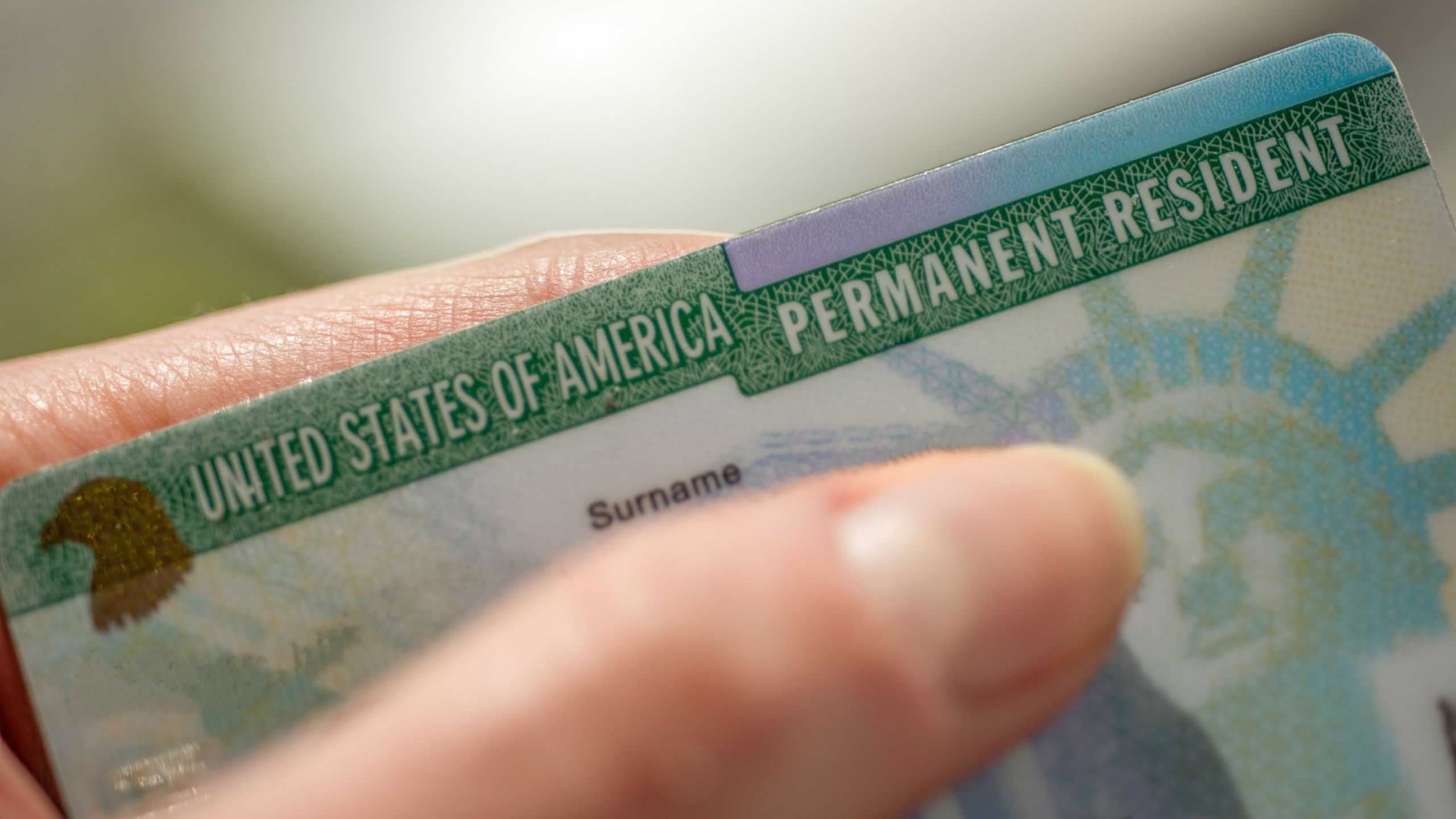Visa Bulletin Explained: The Green Card Waiting List
How Many Green Cards Are Issued Every Year?

Green cards have always been in high demand — and that demand is still rising. USCIS is working to the best of its ability to clear out its backlogs and help eligible applicants receive their green cards in a timely manner.
The Visa Bulletin is an informative tool for people who are waiting to apply for or receive their green card. Today, you’ll find the Visa Bulletin explained, alongside additional information that can help you understand your place on the green card waiting list.
How Many Green Cards Are Issued Every Year?
Immigration institutions work together to create a maximum limit for the amount of specific types of green cards available each year.
Over one million green cards are issued annually. Some categories (like green cards for immediate family members of U.S. citizens) don’t have set annual limits. Others are issued with an annual cap. The maximum number of green cards available is different for each category.
Additionally, some green card categories have subcategories with their own annual limits. For example, the maximum annual limit for employment-based green cards is 140,000. There is a subcategory specifically for employment-based applicants from India, which is a maximum of 9,800.
There is no limit for spouses, unmarried children under 21 years, and parents of U.S. citizens. U.S. citizens can file as many petitions as they need for their immediate family, and those petitions will never be subject to visa backlogs. There is a limit for spouses, children, and unmarried adult children of green card holders, who are capped at 114,200 total recipients per year.
What Is the Visa Bulletin?
The Visa Bulletin is a resource for people who have active cases with USCIS or the National Visa Center. The Department of State updates the Visa Bulletin each month with information about the amount of available immigrant visas and how fast the queue is moving for each type of application.
The Visa Bulletin displays information for each type of green card applicant and the current visa availability dates for applicants in those categories. You can use the Visa Bulletin to estimate how long you may wait before your green card becomes available.
Understanding the Three Sections
The Visa Bulletin has two sections, each divided into preference categories. One section is for family-based green cards subject to a maximum yearly cap. The second section is for employment-based green cards. The title of each section refers to the type of visa associated with the green card. The third section is for Diversity Lottery selectees.
Understanding the Date Column
The priority date column shows when the United States expects new green cards to become available for people in each category. Applications submitted on or before the date listed are likely to be processed next and considered for the next round of available green cards.
Some categories may have a letter “C” instead of a date. The “C” stands for current. In these situations, a date doesn’t matter. It means the category is current, and applicants can send in their applications regardless of their priority date.
Understanding the Country Column
The current rules state that no more than 7% of green card recipients can come from the same country of origin. This is an effort to help promote diversity within the green card process.
The rule is controversial, and its opponents point out that the arbitrary 7% rule creates backlogs that are impossible to navigate. Lawmakers who prioritize immigration reform are attempting to change this rule, but it still stands. However, it may change in the future.
Some countries have dedicated columns on the Visa Bulletin, because these countries make up a substantial portion of total applications. The majority of green card applications come from residents of China, Mexico, India, and the Philippines.
Since the total amount of green cards granted cannot exceed 7% per country, processing and dates work differently for these four countries. The backlog is often substantially longer, because these countries reach their 7% cap much faster than others. Some visa categories have a backlog of more than 20 years.
Asylum or refugee claims granted to citizens of these countries do not count towards the 7% total. They’re processed under a separate system and subject to a different annual cap when recipients of refugee or asylum visas are eligible to apply for green cards at the end of their waiting period.
How Can You Tell Where You Are on the Green Card Waiting List?
The Visa Bulletin displays the current processing date next to each visa category. This date indicates that green cards are available for applicants who are the beneficiaries of immigrant visa petitions or labor certifications filed before that date. You can see your priority date by checking the Form I-130, Petition for Alien Relative, or Form I-140, Petition for Alien Workers approval notice.
Note that there is no guarantee that you will receive a green card if you file for one. The date shown simply means that green cards are available for eligible applicants ready to submit their paperwork. If there are issues with your application or eligibility, you can still be denied a green card.
What Happens When the Dates Move Backwards on the Green Card Waiting List?
When processing is running smoothly, the green card waiting list dates should move forward. However, they may occasionally move backward in a process called visa retrogression. If immigration institutions receive more eligible applications than their green card limit would allow, the dates roll backward to manage the queue.
They may roll forward again if green cards are still available after the backlog has been processed, but this isn’t a common scenario. Many people would need to be denied a green card for green cards to remain available after a large backlog has cleared.
If you’ve already filed your green card application before visa retrogression happens, you don’t need to file again. USCIS will hold your green card application until the dates move forward again. Your case won’t be rejected. It will simply be paused until USCIS has available green cards for your category. The Department of State will act similarly if you are applying for an immigrant visa through consular processing.
Dates will sometimes roll forwards after a month or two. If they don’t, they’ll usually begin to move forward again between October and December. They may move forward slowly. It’s important to check as often as possible to avoid missing your application window when green cards become available, especially if it’s been difficult to find recent priority dates in previous months.
When Is the Best Time To Apply for a Green Card?
Green cards are in high demand in every category at every time.
Green card applications are at an all-time high, and allotments haven’t risen enough to keep up with the escalating demand. It’s important to act quickly when an immigrant visa becomes available in your category to prevent retrogression — or a lack of available green cards — from delaying your case.
You should prepare all of your required documents ahead of time and keep them waiting until you see the Visa Bulletin availability date change to the current month. It can be valuable to seek the advice of an experienced immigration attorney when preparing your paperwork. Submitting complete and accurate information will increase the chances that your case will move forward.
What Happens If You Don’t Hear Back After You File for Your Green Card?
If you aren’t contacted by USCIS about taking the next steps in the green card process, check the Visa Bulletin. Your category may have gone into visa retrogression, or your country may have hit its 7% maximum for green card allotments. USCIS will likely contact you when your visa becomes available to continue the process.
You can also view your case status online to make sure USCIS has everything they need from you. It’s important to verify that the address and phone number you have on file with USCIS are correct. If they attempt to contact you and you don’t respond promptly, you may lose your place in line and have to re-file your paperwork.
If you don’t hear back and there’s a significant backlog, you don’t have to do anything until USCIS contacts you. They won’t reject your application based on the availability of an immigrant visa. They’ll hold onto your information and move forward with your case when more immigrant visas become available for your green card category and country of origin.
It’s not unusual to wait a long time if you’re applying from a country that reaches capacity quickly or a very popular type of green card.
When Do New Immigrant Visas Become Available?
New immigrant visas become available on October 1st of each year, and cases will be processed throughout the year until the yearly allotment for each category has been reached or eligibility conflicts prevent specific individuals from obtaining a green card during a fiscal year.
The yearly allotment of immigrant visas doesn’t renew at the start of the calendar year. It renews several months sooner. Immigration agencies use the fiscal year as their measurement of a year, and the fiscal year begins in October. The annual allotment of immigrant visas can be used until September 30th, but they typically run out sooner. Immigrant visas become available again on October 1st.
What Happens If USCIS Denies Your Green Card Application?
If your green card application is denied, you may have the option to request reconsideration or reopening. Motion to reconsider or reopen are only valuable if something about your case was misinterpreted, you believe USCIS made an error, or you have new, previously unavailable evidence.
For example, if there was an error in your background check that made you inadmissible, you can successfully seek reopening and/or reconsideration of your case by providing proof that the information presented to USCIS was inaccurate.
If your eligibility has changed, you may be able to start a new green card application process. For example, if you were filing as through an employer and you were denied, but are now married to f a United States citizen
If your eligibility hasn’t changed and the reason for your rejection was legitimate in accordance with United States immigration law, your motion will be denied. It’s very difficult to file and win a motion to reconsider and/or reopen on your own successfully. If you need to seek reconsideration or reopening of a decision, it’s very important to enlist the help of an experienced immigration attorney who has successfully challenged USCIS decisions in the past.
Do You Need Help With Your Green Card Application?
The wait for a green card can be lengthy, especially if you’re applying as a national of a country that has a backlog. Filing properly the first time can potentially reduce your wait time by avoiding errors during the application process that may send you to the back of the queue.
The experienced immigration law team at Cohen, Tucker + Ades may be able to help you complete and file your green card paperwork. Contact us for a consultation to review the details of your immigration case.
Sources:
Permanent Resident (Green) Card and Immigrant Visas | USAGov
The Visa Bulletin | U.S. Department of State | Bureau of Consular Affairs
Not sure which option is right for you? Request a confidential consultation today.

